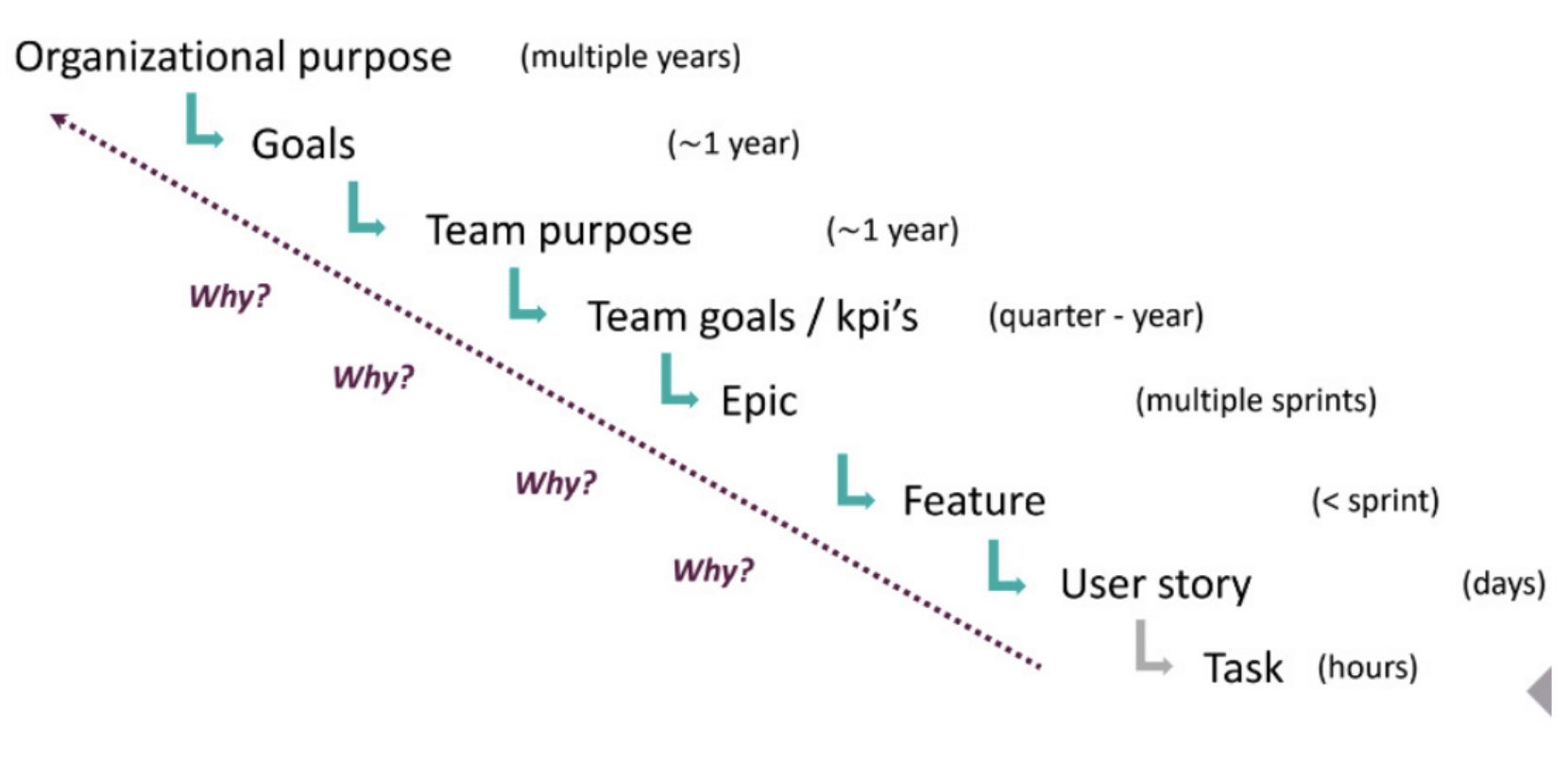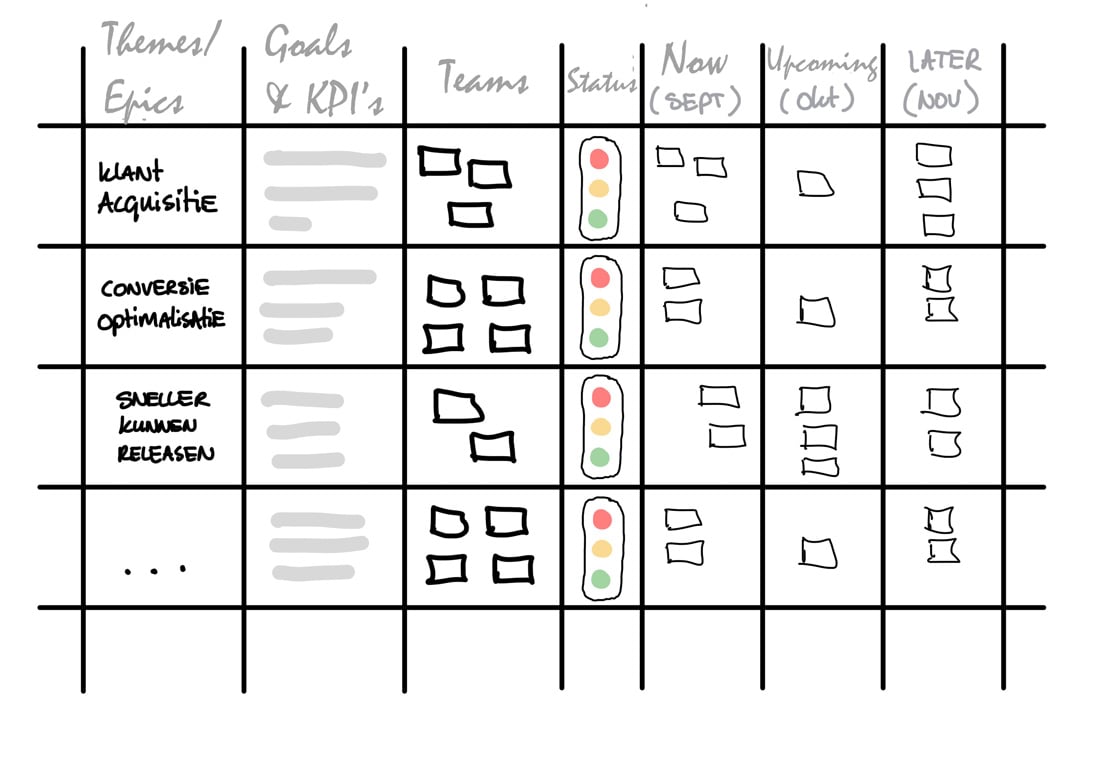How Product Owners Should Be Aligned and Work Together.
Shared leadership is what you want in organizations that sometimes have dozens of product owners. But how do you get those product owners to work together in line with what the others are doing? Find a big, empty wall for part 2 of a blog series by Xebia Product Management.
Wait, find a big wall?
Sometimes it's actually that simple. We've all become experts in hiding our data in digital tools, but sometimes you just want to see what's going on in a clear and tangible way. And what's better for that than a big wall that lets us create a visual overview and enables transparency?
This overview is necessary to show a clear and shared picture of what is important and what has priority. A wall can also help product owners and teams work in line with each other and the eventual goal in mind, despite each having their own mandate. And it is a way that lets us determine together if we're still working on the right things. If it turns out to not be the case, we can decide then and there what needs to change, making it clear for everyone right away.
For this process, you'll need three things to get started.
- A big, empty wall.
- An overview of all teams and what they are working on.
- An overview of the strategic goals and the work that is required to achieve those goals.
One of the conditions for success is that everyone agrees on the level of detail with which the work that has to be done. This will be shown on the wall. I'll make this a little more concrete with the overview below. How do the different steps relate to each other, and what is their time frame?

Team Alignment Wall
We call this the "Team Alignment Wall." It can play a key role in the execution of a strategy. That's something I've seen with different clients.
One of my clients has almost thirty teams that each work on a sub-part of a specific product. There are interdependencies between those teams; some can only get on with their work when another team has finished a certain part. Unfortunately, because communication between teams was lacking and it was unclear who exactly was responsible for what, there was no shared leadership.
Running your own stall
Imagining it like a marketplace, all product owners were running their own stall, not thinking about the interests of the market as a whole. There were countless Excel lists and other tools, but nobody really had a clear overview of the road to the end goal, which was to make the product better.
As a result, the head of the market, – the manager of the complete product – still made most of the decisions. This meant that the product owners felt like they had no autonomy, and management noticed that there was little ownership and responsibility being taken.
That’s when I introduced the Team Alignment Wall to that client. First, I found a physical space with a large wall that was available. Then, I used that space to visualize the relationships between the teams, who has which goals, and who is working on different things. Here is a simplified representation of that visualization.
Overview per team (= Team alignment wall) 
Goal-driven road map
After we created this Team Alignment Wall, there was an immediate need to create a similar overview of the overarching strategy and objectives of this part of the organization.
That's why we created a "Goal-driven road map.” This is an overview with strategic goals, KPIs, the teams involved, and all the work that will be done to achieve those goals.

Asking critical questions
The overview alone is enough to give transparency when it comes to the goals and priorities for the foreseeable future. We also initiated a process that meant they can check how things are going at regular intervals and make adjustments if necessary.
These days, the product owners meet once a week in front of this wall to discuss progress and coordinate their plans. It's working well. Not just because of the visualization, but also by meeting in person. That has a much more lasting effect than a statement in an email, and it enables product owners to ask each other critical questions.
In just ninety minutes
Requiring only a small amount of coaching from my part (at first, the managers often still make decisions at first, so they had to be slowed down a bit), everyone knows what the various teams are working on, and plans have been adjusted where necessary at the end of such a meeting.
A process that normally takes weeks, has been reduced to a ninety-minute session. I see similar results at other clients.
So, my question to you is; are you already considering a suitable room for this in your office building?
Want to know more about our alignment wall and how it works in practice? Please send me an email. I'm also open to suggestions for a good Dutch translation for alignment wall, other than "overeenstemmingsmuur." That sounds like it's related to the Wailing Wall.
This is a blog series by Xebia Product Management:





